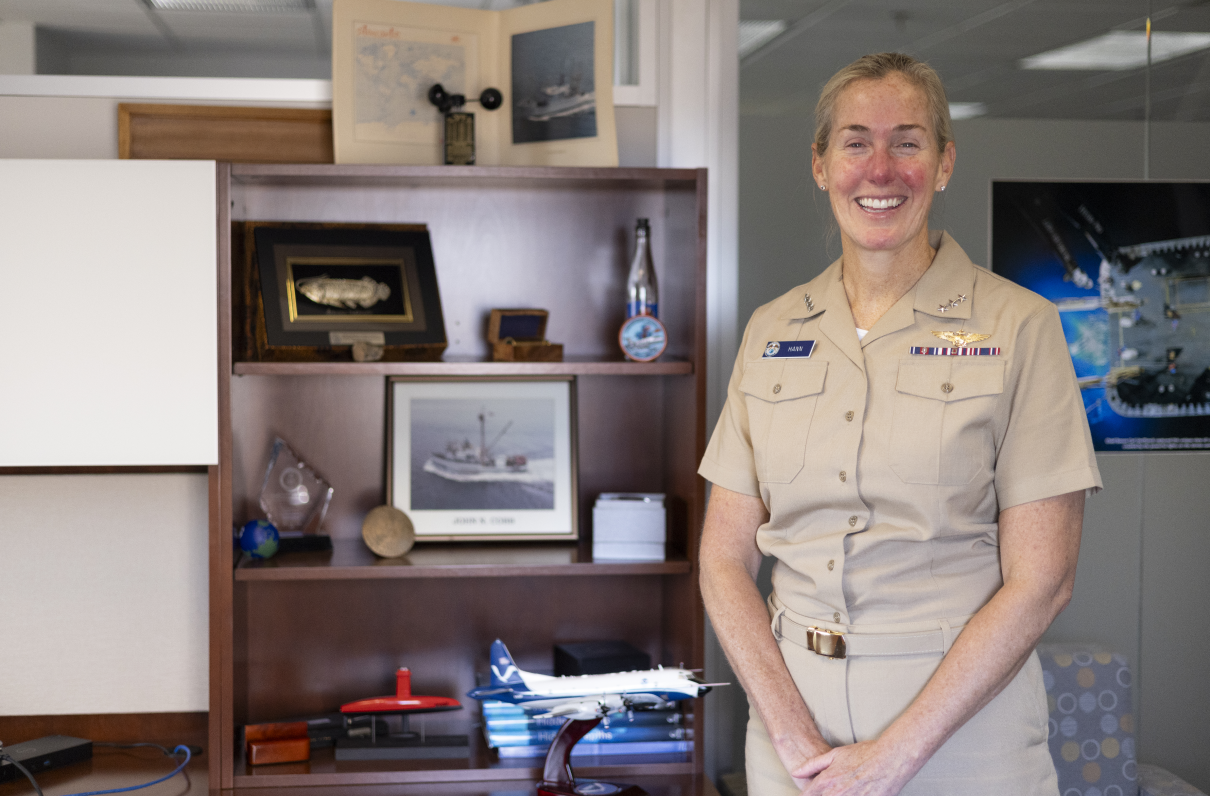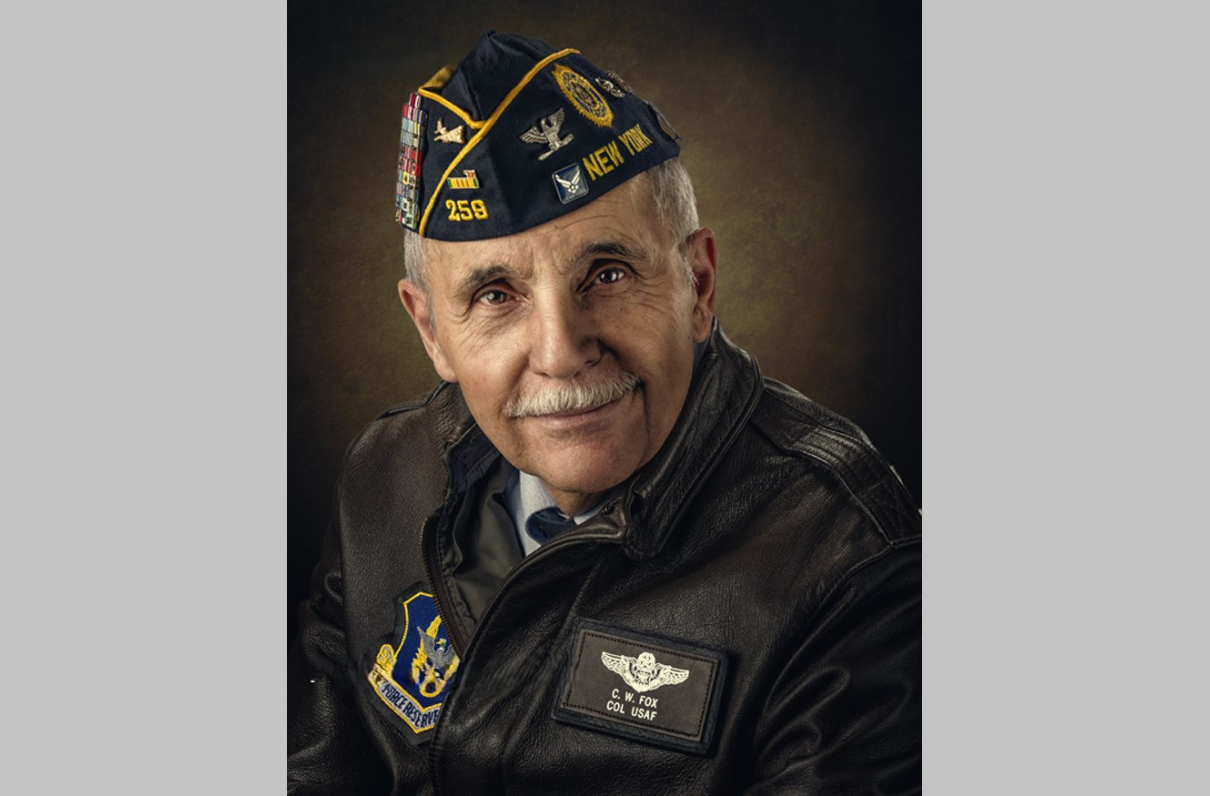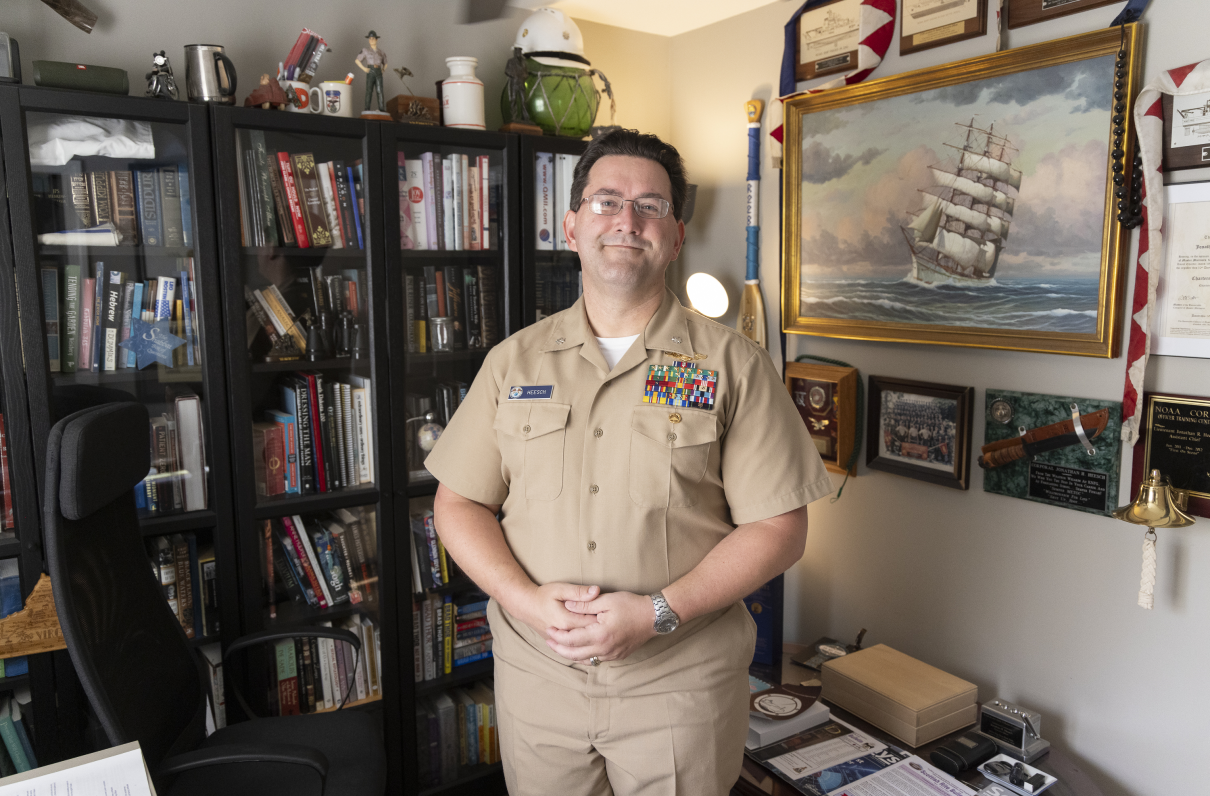Vice Adm. Nancy Hann, a MOAA Life member and board member, became the National Oceanic and Atmospheric Administration’s deputy undersecretary for operations in August, overseeing the day-to-day management of the service across our oceans, in our atmosphere and in an expanding mission in space.
Hann, a native of Bloomington, Ill., joined NOAA as a civilian, earned her commission and in 30 years has served aboard ships, has flown NOAA aircraft, and served as director of the NOAA Commissioned Officer Corps, now at 350 officers and on its way to 500. In her current role, a position rarely held by a NOAA Corps officer, her oversight adds 12,000 civilians.
Q. What made you decide to serve, and why NOAA?
A. My dad served in the Army, and then he served in the National Guard. And quite a few of my family members had served in the Army. And it's not something I thought about growing up. But as I became educated in marine science … I quickly realized that the opportunity to serve and be operational was a lot more interesting to me.
NOAA Corps was really attractive to me, and it still is, because it's service and it's science. I like understanding the world around us.
Q. You mentioned wanting to be operational. How have your jobs differed?
A. One of my [first] jobs was to stand deck watch with the deck officer, and that's when I really saw what it meant to drive the ship and navigate. Part of my shift would be to help fish. I’d go in the galley and cook. You’re just in raw nature. There’s nothing to stop the waves and the weather, and you’re trying to manage it to get the information you need.
The adventure of that was very appealing and then the opportunity to dive. I started diving when I was 16. I like being under the surface and just seeing and hearing and touching things that are out of the everyday world.
And then the opportunity to fly came up. Through all of it, I realized that all aspects of how we collect the data — the ships, the aircraft, and the diving — are all related.
[MOAA INTERVIEW: Retired 3-Star Leads College Football Playoff]
Q. Your current role is a culmination of all those roles.
A. I never imagined I'd be in this role. My career has been a little nontraditional. I dove. I’ve flown. Usually, a person spends the majority of their career in kind of one discipline. But I don't think there's a better career track that would have prepared me for this position. I had the opportunity to be involved in NOAA’s largest ship recapitalization in the history of the organization and NOAA's largest aircraft recapitalization. Seeing the mission but also seeing the business fundamentals that enable that mission has really prepared me.
Q. Where would you say NOAA operations are excelling today, and where are you hoping to see some improvements?
A. We’re excelling in the National Weather Service space. Hurricanes Helene and Milton are two recent examples, and as devastating as those were, those forecasts were right on — not just where a hurricane will make landfall and at what intensity but the flooding and the winds and all the impacts. Those were all forecasts. So it allows emergency managers to make good decisions.
I think an opportunity to improve is large-scale acquisitions. There are some places where we're doing it really well, but NOAA, in its history, has not had the requirement to recapitalize major systems like it does right now. All the weather radars need to be recapitalized by 2030. That is a backbone of all the forecasts in the U.S.
We have such enormous volumes of data, and we can't do it all on premise anymore. We have to move to cloud computing and artificial intelligence [AI]. We’re looking at leveraging available technology.
[RELATED: More MOAA Members in the Spotlight]
Q. Can you talk about AI and some of the ways NOAA could make better use of it?
A. One thing I've learned is we're using [AI] more than I realized. It's helping accelerate the process of weather forecasting. With all the extreme weather and the kind of anomalies that happen regionally, having that first step or two to work from is really beneficial, and then we've also been using it in ocean and climate modeling.
Q. Where are you seeing deployments and missions increasing, and where are they decreasing?
A. They're increasing everywhere, and that's the challenge right now. The need for NOAA’s data and products and services just continues to grow. There are more people living in coastal areas, [and] there’s more flooding. As the water temperatures change, fish are moving, and we need to know where they’re moving. We’ve had a 100% increase in our operational hurricane tasking in the past four years.
NOAA manages and operates a significant amount of the data that comes from space. We recently launched the software that's the tracking system for what's in space. The government satellites, the private satellites, the big ones, the small ones, all of it — we manage that data now.
[RELATED: MOAA Member Considers USPHS Service 'One of Great Honors in Life’]
Q. You serve on MOAA’s board of directors. What does the role mean to you?
A. I've really appreciated the opportunity to bring NOAA Corps issues to the table with all the other services and learning from each other. What are our challenges? What are our best practices? What can we do together? I think it's that economy of scale of all of us working together. That's so valuable — learning about challenges and learning about resources and bringing those back to our servicemembers.
Want to Help Servicemembers in Your Community?
Learn how you can make a difference with your local chapter.



